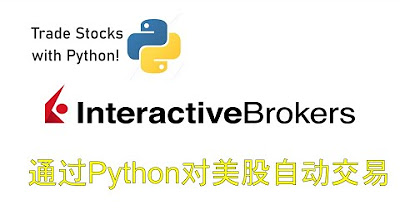How to Create a Solana Trading Bot
Summary
TLDRIn this video, viewers learn how to create a trading bot using QuickNode's Jupiter Swap API to automate token swaps on the Solana blockchain. The bot fetches the best swap routes by comparing prices from multiple decentralized exchanges (DEXs) and executes trades based on user-defined criteria such as target gain percentages and check intervals. The process includes setting up the API, integrating Solana wallet management, and executing token swaps, all while logging transactions and refreshing balances. This tutorial serves as an educational guide to creating decentralized trading bots with the Jupiter Swap API.
Takeaways
- 😀 QuickNode's Jupiter V6 Swap API allows you to efficiently find the best token swap routes by comparing prices across different decentralized exchanges (DEXs).
- 😀 The tutorial demonstrates how to set up a trading bot that interacts with Solana blockchain and executes token swaps using the Jupiter API.
- 😀 API endpoints like Solana mainnet URL and Mattis (Jupiter Swap API) URL are required for the bot setup.
- 😀 To avoid high latency, the Jupiter Swap API is hosted on QuickNode's infrastructure, ensuring fast and reliable transactions.
- 😀 Security is crucial: the bot uses a Solana wallet secret key for transactions, which should never be shared publicly.
- 😀 The bot is configured to track token prices and execute trades when the price difference meets the defined target gain percentage.
- 😀 The bot's configuration includes essential parameters like check intervals, target gain percentage, and initial input token (e.g., USDC).
- 😀 The bot continuously monitors the market, compares token prices, and executes swaps only when conditions meet the predefined thresholds.
- 😀 After each trade, the bot refreshes its token balances and prepares for the next trade by evaluating the price gain from the previous trade.
- 😀 All transactions are logged into a JSON file, capturing essential details like input/output tokens, amounts, transaction ID, and timestamps for auditing.
- 😀 The code serves as an educational demonstration of the Jupiter API's capabilities and is not intended as financial advice for actual trading.
Q & A
What is the purpose of using the Jupiter Swap API in trading bots?
-The Jupiter Swap API helps traders find the best possible routes for token swaps by comparing prices across different decentralized exchanges and automated market makers, making it particularly useful in the fast-moving crypto markets.
Why is the Solana blockchain chosen for this trading bot implementation?
-The Solana blockchain is chosen because of its low latency and high throughput, which are ideal for real-time trading bots. The QuickNode infrastructure further optimizes performance by reducing any network-related delays.
What does the 'Mattis' API endpoint provide in this setup?
-'Mattis' is the Jupiter V6 Swap API, hosted by QuickNode. It provides efficient routes for token swaps by utilizing the liquidity from various decentralized exchanges, helping the bot perform optimal trades.
What are the essential environment variables required for the bot?
-The essential environment variables include the Solana wallet secret key, the Solana mainnet endpoint from QuickNode, and the Mattis API endpoint for token swaps.
How does the bot handle token swaps and determine the optimal time to swap tokens?
-The bot checks for price changes at regular intervals, compares the prices of tokens, and executes swaps when the output amount meets the target gain threshold, which is set as a percentage above the input amount.
What happens if the bot detects that the Solana balance is below 0.01 SOL?
-If the Solana balance drops below 0.01 SOL, the bot terminates to prevent further operations, ensuring that it doesn't run out of funds for transaction fees.
How are the token balances updated during the bot's operation?
-The bot refreshes token balances by querying the Solana blockchain and updating the wallet's Solana and USDC balances using the `getBalance` and `getTokenAccountBalance` methods from the Solana web3.js library.
What is the significance of the target gain percentage in the bot's logic?
-The target gain percentage determines the profit margin that must be achieved before executing the next trade. It ensures that the bot only executes trades that meet the desired profit threshold, helping to manage risk and optimize returns.
How does the bot handle transaction confirmation and ensure successful trades?
-The bot waits for transaction confirmation before proceeding with the next trade. It checks for pending confirmations and only executes further actions once the previous swap has been successfully confirmed.
Can the bot be customized to work with other tokens or blockchains?
-Yes, the bot can be customized to work with other tokens by adjusting the swap token configurations. However, for other blockchains, modifications would be needed to connect to their respective networks and APIs.
Outlines

هذا القسم متوفر فقط للمشتركين. يرجى الترقية للوصول إلى هذه الميزة.
قم بالترقية الآنMindmap

هذا القسم متوفر فقط للمشتركين. يرجى الترقية للوصول إلى هذه الميزة.
قم بالترقية الآنKeywords

هذا القسم متوفر فقط للمشتركين. يرجى الترقية للوصول إلى هذه الميزة.
قم بالترقية الآنHighlights

هذا القسم متوفر فقط للمشتركين. يرجى الترقية للوصول إلى هذه الميزة.
قم بالترقية الآنTranscripts

هذا القسم متوفر فقط للمشتركين. يرجى الترقية للوصول إلى هذه الميزة.
قم بالترقية الآنتصفح المزيد من مقاطع الفيديو ذات الصلة

Photon Solana Tutorial: How To Use Photon Sol (2024)

November Success Story: 3-5 ETH Daily with ChatGPT | Beginner’s Guide to AI Trading

Autoview - Create Crypto Trading Bot just in few minutes in TradingView.

How To Use Nova Solana Trading Bot (Full Beginner Guide)

如何用Python對美股自動量化交易, 實戰一個簡單的日內自動交易程序

HOW I TRADE 1000X MEMECOINS USING PEPEBOOST (FULL GUIDE)
5.0 / 5 (0 votes)
